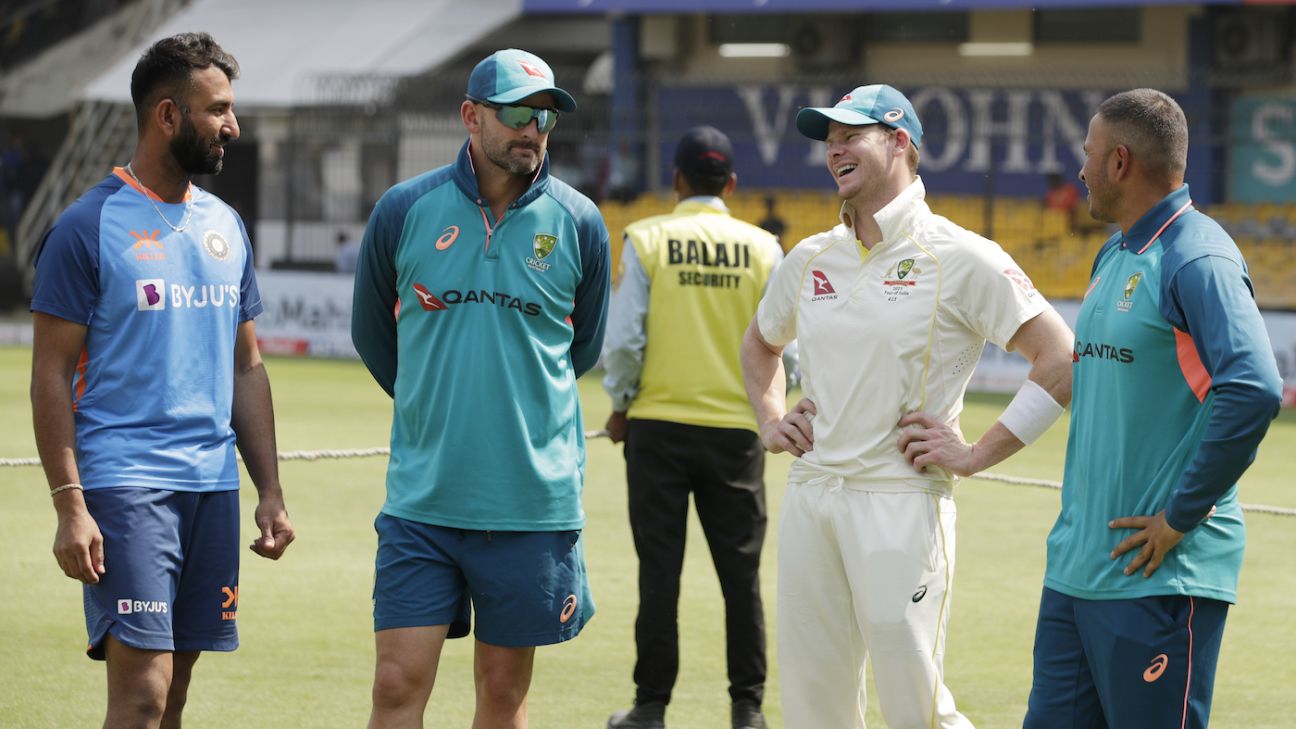The opening day of the final Test will see a brief but elaborate attendance by the Prime Ministers of both countries with Narendra Modi, who the stadium is named after, hosting his Australian counterpart Anthony Albanese.
Parking the politics, there are some practicalities to consider should a huge and loud crowd eventuate when play gets underway. Perhaps most significantly will be judging reviews that are based around edges but also communicating with team-mates over other line calls.
It’s uncertain what size crowd will attend on the other days – however long the game lasts – or indeed how many will remain in the stadium once the early formalities are complete. Both leaders are only expected to stay for around an hour of the first session.
Attendances have been encouraging during the series. But whether fans will get to see a fourth day for the first time was hard to judge two days out with what appeared a bit of further byplay going on around the pitches.
Two surfaces were covered and uncovered at regular intervals, as both were being considered for use, but just before Australia left a few of the squad did gather around the drier-looking of the two pitches.
“Honestly the pitch talk is getting too much, every time we play in India focus is only on the pitch. We focus too much on the pitch in India,” he said. “I don’t think that is necessary. Honestly speaking, these are the kind of pitches we want to play on. This is our strength, so when you’re playing at your home, you always play to your strength, not worry about what people outside are talking about.”
One of the key reasons Australia were able to fight back in Indore was because they have not taken a negative view to it, rather embraced the challenge to finding solutions.
If Australia can channel their positive outlook one more time, it could secure a drawn series against the odds, and against the conditions.
